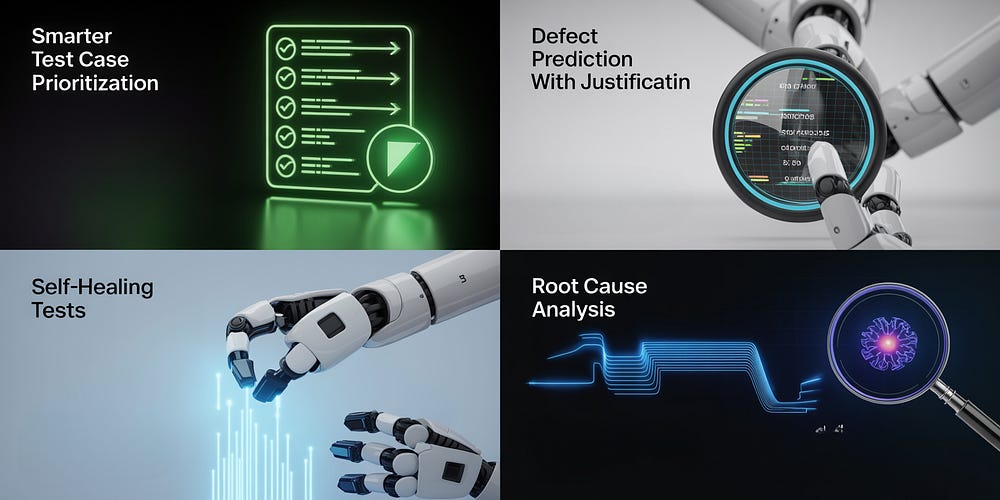How Explainable AI Is Shaping the Future of QA Automation
From Black Boxes to Transparency: Why Trustworthy AI Is the Next Frontier in QA Automation
Quality Assurance (QA) has always been about trust. Trust that the code works, trust that the automation is reliable, and trust that the system will perform under pressure. But as AI begins to play a bigger role in QA automation, a new challenge emerges: how do we trust the AI itself?
That’s where Explainable AI (XAI) steps in. Far from being just another tech buzzword, XAI is redefining how teams approach testing, validation, and continuous quality in modern software development.
The Problem with “Black-Box” AI in QA
Traditional automation relies on deterministic rules: if X happens, expect Y. This makes debugging simple — you can trace exactly why a test failed.
AI-driven automation, on the other hand, introduces predictive models and adaptive algorithms that don’t always provide obvious reasons for their outputs. For example:
An AI test prioritization engine may decide to skip certain regression tests.
A defect prediction model might flag a module as “high risk” without clear justification.
A self-healing test may re-route selectors in unexpected ways.
When the reasoning is opaque, QA engineers are left asking: Why did the AI make that decision? Can I trust it?
How Explainable AI Is Shaping the Future of QA Automation
Quality Assurance (QA) has always been about trust. Trust that the code works, trust that the automation is reliable, and trust that the system will perform under pressure. But as AI begins to play a bigger role in QA automation, a new challenge emerges: how do we trust the AI itself?
That’s where Explainable AI (XAI) steps in. Far from being just another tech buzzword, XAI is redefining how teams approach testing, validation, and continuous quality in modern software development.
XAI
Explainable AI bridges this gap by making machine learning models transparent and interpretable. Instead of offering a black-box verdict, XAI provides insights such as:
Feature importance — which factors influenced the decision?
Decision pathways — how did the model arrive at this outcome?
Confidence scores — how certain is the AI about its prediction?
This clarity allows QA teams to verify, challenge, and refine AI-driven decisions — just as they would with traditional test logic.
Practical Applications in QA Automation
1. Smarter Test Case Prioritization
AI tools can rank test cases by business impact and risk. With XAI, testers don’t just see what was prioritized, but why. For instance, “Test A ranks highest due to recent changes in the payment module and high historical defect density.”
2. Defect Prediction with Justification
Instead of blindly trusting an algorithm that says “Module X is risky,” XAI shows the reasoning: e.g., “High churn rate in commits, frequent dependency changes, and a spike in production incidents.” This helps QA teams proactively validate or disprove the claim.
3. Self-Healing Tests That Explain Themselves
AI-powered self-healing can automatically adjust locators when the UI changes. With XAI, engineers can see the decision trail: “Original locator failed; system switched to semantic match on label + button hierarchy.”
4. Root Cause Analysis
When an AI tool detects anomalies in performance or reliability tests, XAI can explain which signals (CPU spikes, response delays, log anomalies) triggered the alert — accelerating debugging.
Why This Matters
QA is more than finding bugs — it’s about building confidence in the system. If AI is to take on more responsibility, testers must be able to explain its decisions to developers, managers, and auditors. Without transparency, adoption stalls.
With Explainable AI, however:
Testers gain trust — they understand and validate AI-driven insights.
Developers gain clarity — debugging becomes easier when reasoning is visible.
Leaders gain confidence — compliance and audit requirements are met with explainable evidence.
The 1,000 Foot View
Explainable AI won’t replace QA engineers — it will empower them. By providing transparency, it transforms AI from a “mystical helper” into a reliable teammate.
The future of QA automation isn’t just about faster test runs or smarter predictions. It’s about AI you can trust, and trust comes from understanding.
As organizations embrace AI in their pipelines, those who invest in explainability will unlock not only speed but also confidence — the real currency of quality.




